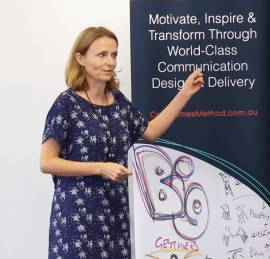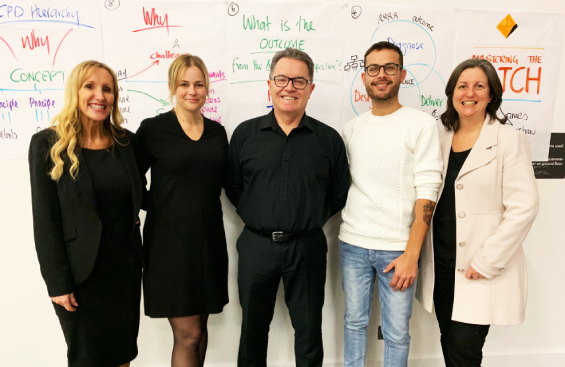Training that works.
We use a broad range of sustained learning techniques in all our deliveries to ensure that our training is not only hard-hitting, challenging and provoking - but that it is relevant, deeply practical and the knowledge sticks - enabling real ROI to be achieved.
The Colin James Method® difference
Understanding Why you need to shift skills is vital to training, yet when teaching this many courses focus too much on the What and Why – missing the key step – How to do it. Our deeply practical programs focus on teaching you immediately applicable skills – the How.
Our learning experience is like no other – participants are deeply engaged, constantly learning and see results on the day – giving them the confidence to keep practicing their skills and improve their capability once they leave the training room.
To truly embed the learning and support the implementation of new skills inside and outside the training room, our expert facilitators incorporate a broad range of sustained learning tools and techniques into their delivery – even the online training modules!
Soft skilled occupations will make up 63% of all jobs by 2030
- Deloitte, Access Economics
-Soft Skills For Business Success,2017


What is sustained learning?
New behaviours and attitudes are formed by frequent, consistent and conscious practice over time; this builds new neural connections and patterns, which overtake the old ones, so we can think and behave in new ways. We use this technique to develop new skills and habits in our training programs.
Our programs constantly support you with techniques, materials, people and practical experiences that force you to build these new pathways in your brain. Ensuring that what you hear, see and experience is helping you learn.
How does The Colin James Method® use
sustained learning techniques?
Review the broad range of practical sustained learning techniques we use in detail below. Some of these are subtler than others but with constant reinforcement, they ensure results from all The Colin James Method® training. Click on the ‘Learn more’ buttons to watch a video about each technique.

Line of tolerance
A framework that takes participants just outside their comfort zone in a safe environment to deepen learning.

Individualised facilitation
Understand how each individual works and learns to provide the right tools to embed learning.

Virtual reality
Gain confidence, overcome nerves, and get pitch perfect by rehearsing in advance in realistic, immersive virtual environments.

Instigating behavioural change
Focusing on one change at a time with support and reminders to reinforce a new habit.

Accredited facilitators
Our facilitators are deeply trained in our methodology to enable them to identify which techniques work best to help you sustain the skills you have learned.

Flipcharting
Using visual engagement via flipcharting and asking participants to actively write down the content to engage with key information.








